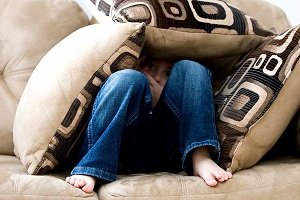Bipolar Disorder Case Study
TweetSome people with bipolar disorder receive medication and/or psychosocial therapy by volunteering to participate in clinical studies. Clinical studies of bipolar disorder involve:
- scientific investigation of illness and
- treatment of illness in humans.
Clinical studies in mental health(Bipolar Disorder) can yield information about the following:
- efficacy of a medication,
- combination of treatments,
- the usefulness of a behavioral intervention,
- type of psychotherapy,
- the reliability of a diagnostic procedure,
- or the success of a prevention method.
Clinical studies also guide scientists in learning how illness develops, progresses, lessens, and affects both mind and body. Millions of Americans diagnosed with mental illness lead healthy, productive lives because of information discovered through clinical studies. These studies are not always right for everyone, however. It is important for each individual to consider carefully the possible risks and benefits of a clinical study before making a decision to participate.
In recent years, NIMH has introduced a new generation of "real-world" clinical studies. They are called "real-world" studies for several reasons.
- Unlike traditional clinical trials, they offer multiple different treatments and treatment combinations.
- they aim to include large numbers of people with mental disorders living in communities throughout the U.S. and receiving treatment across a wide variety of settings.
- Individuals with more than one mental disorder, as well as those with co-occurring physical illnesses, are encouraged to consider participating in these new studies.
The main goal of the real-world studies is to improve treatment strategies and outcomes for all people with these disorders. In addition to measuring improvement in illness symptoms, the studies of bipolar disorder will evaluate:
- how treatments influence other important, real-world issues such as quality of life, ability to work, and social functioning,
- they also will assess the cost-effectiveness of different treatments and
- factors that affect how well people stay on their treatment plans.
Some typical Bipolar Disorders Study
Carrie was a second year college student when she first began having problems. She would go days without sleeping. She began having trouble concentrating in school and stopped going to classes. She started having sexual relationships with 4 different men and she spent all of the money she had for the school year in three months. When her parents discovered the problems, they brought her in for evaluation. Carrie did not feel that anything was wrong. She felt that she had just made several poor decisions, like anyone her age. Her parents felt things were not the same. She had always been a thoughtful, responsible person prior to the last several months. A scan was ordered to help evaluate the clinical situation. It revealed marked patchy uptake throughout the cortex. Lithium was very helpful for Carrie and she was able to return to school the next semester.
Some satistics about Bipolar
- Bipolar disorder affects approximately 5.7 million adult Americans or about 2.6% of the U.S. population age 18 and older every year.*
- Bipolar disorder affects about 60 million people worldwide.
Bipolar Disorder - Bipolar Disorder is the form of depressive illness in which the sufferer has periods of being on a high, as well as periods of depression.
Treatment of Bipolar Disorder - Effective treatment is available for bipolar disorder.
What is the cause of Bipolar Disorder? Learn about various causes of bipolar disorder such as family tree, your genes, loss of job, etc.
The less severe form of high in bipolar disorder is hypomania.
What are the symptoms of Bipolar Disorder? There are various symptoms of bipolar disorder.
Rapid Cycling Bipolar Disorder the essential feature of rapid cycling bipolar disorder is the occurrence of four or more mood episodes during the previous 12 months.
Can Adolescent have bipolar disorder? Bipolar disorder can occur in adolescents and has been investigated by federally funded teams in children as young as age 6.
Can Children Have Bipolar Disorder? Children experience faster mood swings than adults, often cycling many times within a day.
Bipolar disorder - a case study Millions of Americans diagnosed with mental illness lead healthy lives because of information discovered through clinical studies.
History of bipolar disorder - Bipolar disorder has left its mark on history.
Importance of Bipolar disorder diagnosis Diagnosis is important, because it guides treatment decisions.
What is the need of diagnosis in childhood? The importance of proper diagnosis cannot be overstated.
What are the types of bipolar disorder? Learn about various types of bipolar disorder.
How can u help ur child and what is the role of parents? Your child can reduce the minor mood swings and stresses that sometimes lead to more severe episodes by adhering to the following tips.


Sometimes crying or laughing
are the only options left,
and laughing feels better right now.

Current Issue
 Self Help Leaflets Take the help of our self help leaflets or booklets. |
 The DG Magazine All about living with depression |


















